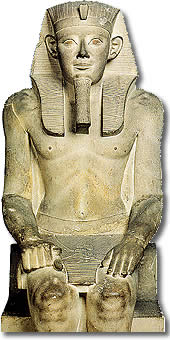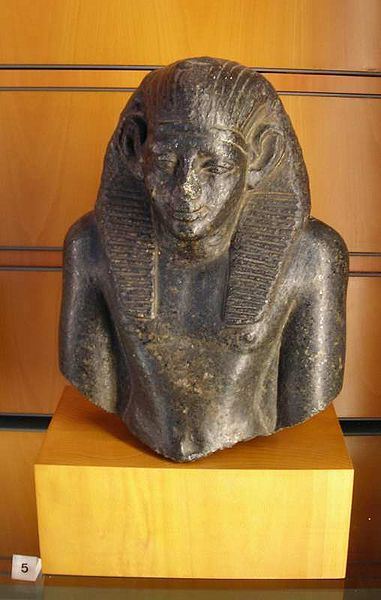The Israelites numbered about 70 when they first came to live in Egypt at the invitation of the Pharaoh whose vizier was Jacob’s 11th son Jospeh-Imhotep. They were allowed to live in the best part of the land; Goshen. Here they flourished and multiplied under the protection of Joseph who was second in charge of Egypt and had saved the country from a seven year famine by storing up grain to sell before the famine started. Joseph had brought up all the land of Egypt and had made the Pharaoh very rich and powerful. Joseph lived until the age of 110 years and served several pharaohs. When he died, he was embalmed and given a royal Egyptian burial – some 80 yrs after he first entered Egypt.
The Israelites came to Egypt in the 3rd dynasty when Netjerikhet was the Pharaoh. Pharaoh Netjerikhet came to be know as Pharaoh Djoser as time went by (the pharaoh of Joseph). The Israelites flourished and multiplied during the 3rd & 4th dynasties while Joseph was alive and continued to multiply during the 5th & 6th dynasties after his death. The 6th dynasty, which was based in Memphis in Lower Egypt, was contemporary with the 9th and 10th dynasties based in Herakleopolis and the 11th dynasty based in Thebes.

Amenemhet I – the first pharaoh of the 12th dynasty. He reigned for 30 yrs (including a 10 yr coregency with his son Sensuret I) and then was assassinated.
About 100 years after Joseph’s death, a pharaoh who did not know Joseph came to power. Amenemhet I was the vizier of Mentuhotep IV of the 11th dynasty based in Thebes (Upper Egypt). He assassinated Mentuhotep IV of the 11th dynasty and took over both Upper and Lower Egypt to start what is known as the 12th dynasty (or Egypt’s Middle Kingdom). The pharaohs of the middle kingdom did not like the Israelites and felt threatened by them. Fearing that they would join their enemies, they forced the Israelites into slavery.
The 12th dynasty pharaohs constructed their pyramids from mud brick with only a veneer of limestone. The 12th dynasty pharaohs needed a large slave labor force to make the mud bricks required for their pyramids. This became the task of the Israelites who by the time of the Exodus had come to number over two million. The 12th dynasty lasted some 200 years and during this time, 7 pyramids were constructed as well as the Labyrinth. The Labyrinth was considered one of wonders of the ancient world by Heroditis.
Moses was born during the co-reign of Senusret III and Amenemhet III about 4yrs into Amenemhet III’s reign. Amenemhet III built two pyramids and the Labyrinth. He was very cruel to the Israelites and it was probably he who ordered the midwives to kill the Hebrew baby boys. His daughter Sobeknefru was childless and there was no male heir to the throne. Sobeknefru adopted a Hebrew baby Moses that she found in a basket amongst the reeds of the Nile and she brought him up as her own in her household. He was known as Amenemhet IV.
When Amenemhet IV was old enough, 30yrs, he began a co-regency with Amenemhet III. This lasted 9 yrs and then Amenemhet IV suddenly disappeared. This left no male heir to the throne. Consequently, Sobeknefru had to assume the throne but she only lived for 8yrs and then she died. When she died, the 12th dynasty ended and Egypt became unstable. There was a rapid succession of pharaohs in the 13th dynasty. The longest ruling was Neferhotep I who reigned for 11 years. It was Neferhotep I who was the pharaoh when Moses-Amenemhet IV returned from exile. Neferhotep I was the Exodus Pharaoh who chased the Israelites and whose army and chariots were drowned in the Red Sea.
Egypt was crippled by the Exodus of the Israelites and became vulnerable to invasion. Not long after the Exodus, the Hyksos, shepherd kings from Arabia, invaded Egypt and built a fort at Avaris. From there, they occupied and controlled Lower Egypt for the next 400 years.




